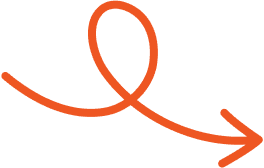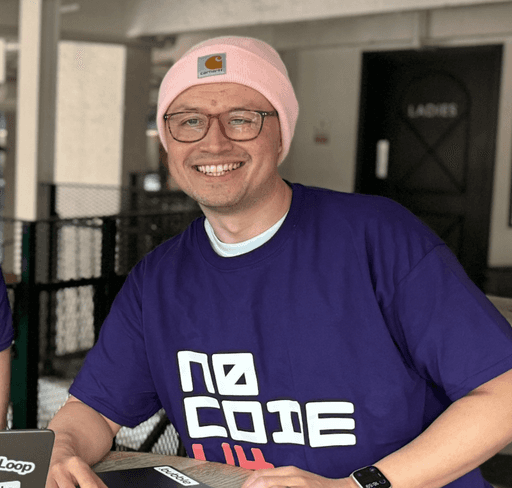Sep 10, 2025
Perfect LinkedIn Banner Size and Tips for a Pro Profile
Learn the ideal LinkedIn banner dimensions and design tricks to make your profile eye-catching, professional, and memorable to visitors.
Your LinkedIn profile is more than a digital resume; it’s the first impression of your personal brand. And what’s the first thing people notice? The banner at the top. A strong LinkedIn banner isn’t just visually appealing; it tells your story and captures attention within seconds.
The challenge is getting the dimensions right. An image that’s too small or poorly cropped can look blurry or unprofessional, affecting how others see your profile. The good news is that with the right size and design, your banner can work for you, not against you.
In this guide, you’ll learn the exact LinkedIn banner size along with design tips to help your profile stand out for all the right reasons.
What Is A LinkedIn Banner?
A LinkedIn banner is the large, horizontal image displayed at the top of your profile, framing your profile picture. It serves as visual real estate that introduces your personal or professional brand. This banner holds potential to make a strong impression by reflecting your values, skills, or industry focus.
Customizing your banner aligns your profile with your brand identity. Relevant elements like company logos, taglines, or branded visuals create consistency. A well-chosen design also helps convey professionalism and credibility, engaging visitors immediately.
Why Banner Size Matters On LinkedIn
Your LinkedIn banner is the most prominent visual element on your profile, stretching across the top of the page. Its size and clarity directly affect the impression you create. A properly sized banner ensures professionalism by avoiding pixelation or awkward cropping, both of which can diminish your credibility.
With nearly 57% of LinkedIn users accessing the platform on mobile devices, designing for multiple screens keeps key elements like logos or taglines visible. A correctly sized banner, at 1584 x 396 pixels with a 4:1 aspect ratio, also prevents LinkedIn's automatic adjustments from distorting your image.
Using precise pixel dimensions guarantees a sharp, polished appearance while enhancing brand recognition. It's essential to preview your banner on both desktop and mobile to verify clarity and proper alignment. This attention to detail supports a cohesive profile, strengthening visitor engagement and your professional reputation.
Recommended LinkedIn Banner Size
Selecting the correct banner size optimizes clarity and ensures your professional image remains polished. Below are size guidelines tailored for personal and company profiles.
Dimensions For Personal Profiles
For personal LinkedIn profiles, the recommended banner size is 1584 x 396 pixels, maintaining a 4:1 aspect ratio. This resolution delivers a sharp appearance across devices, preventing distortion or pixelation.
To accommodate varying screen dimensions, focus important elements like text or logos within the central safe area, approximately 1128 x 300 pixels. This design approach ensures critical information is visible on both desktop and mobile versions of your profile. Use formats like PNG and JPEG, keeping file sizes below 8MB to maintain quality.
Dimensions For Company Pages
Company page banners require different specifications. The main cover photo should be 1128 x 191 pixels, approximating a 5.9:1 aspect ratio. The Life tab cover image follows a 1128 x 376-pixel dimension.
Maintain consistency in file formats by using PNG or JPEG, with sizes ideally under 4MB to prevent quality loss. Incorporating your brand theme into the banners strengthens professionalism and aligns visual identity across all sections of your page.
Ensuring Mobile And Desktop Compatibility
Designing a LinkedIn banner compatible with both desktop and mobile devices avoids cropping issues. Center vital content within the safe area, around 1128 x 300 pixels, and keep a 48-pixel margin free on the top and bottom.
Always preview your banner on multiple devices before uploading to confirm proper alignment and visibility. Stick to supported formats like JPG, PNG, or GIF, ensuring file sizes don’t exceed LinkedIn's 8MB limit for smooth uploads without quality degradation.
Best Practices For Designing Your LinkedIn Banner
Creating an effective LinkedIn banner requires attention to design principles that reflect professionalism and clarity. Following these best practices ensures your banner makes a strong, lasting impression.
Use High-Quality Images
Ensure your banner features crisp, professional visuals that align with the recommended 1584 x 396 pixels dimensions. Sticking to high-resolution formats like JPG or PNG prevents pixelation. Keep the file size under 8MB to avoid quality loss during uploading. To maintain clarity, avoid images with heavy compression or low resolution.
Reliable tools like Photoshop or Canva can help create designs tailored to these specifications. High-quality banners project credibility, especially on high-resolution screens, and capture attention effectively.
Keep Branding Consistent
Maintain a cohesive professional identity by reflecting your personal or company brand in the banner. Use consistent color schemes, logos, or themed elements aligned with your profile purpose.
Place key design components centrally as the profile picture overlaps the left section, potentially obscuring valuable content. This approach ensures alignment across devices, helping visitors recognize and connect with your brand immediately. Branded banners enhance trust while reinforcing your industry presence.
Avoid Text Clutter
Include minimal, concise text to ensure legibility across all screen sizes. Key phrases, taglines, or contact details should remain readable, even on smaller mobile displays. Excessive text can look unprofessional and lead to distractions, weakening your design's impact.
Reserve space for vital visuals instead, allowing the design to convey your message intuitively. Simplicity ensures the viewer focuses on your core message without unnecessary distraction.
Tools To Create The Perfect LinkedIn Banner
Efficient design tools help you craft high-quality LinkedIn banners. Platforms like Canva, Photoshop, Figma, and Snappa offer pre-sized templates tailored to personal (1584 x 396 px) and company pages (1128 x 191 px). These pre-built dimensions ensure your banner meets LinkedIn's requirements without additional cropping or resizing.
Canva and Snappa include free templates optimized for LinkedIn banners. These options simplify design for users with limited experience by offering drag-and-drop features and an intuitive interface. Professional tools like Photoshop and Figma, on the other hand, provide advanced editing capabilities for creating custom designs.
Additional resources, including tutorials on YouTube, can guide you in leveraging free templates to design high-quality banners. By testing across both desktop and mobile devices, you confirm that your branding aligns perfectly with LinkedIn's display settings.
Common Mistakes To Avoid
Even a well-intentioned design can fall flat if basic mistakes are overlooked. Here are the pitfalls to watch out for when creating your LinkedIn banner:
Using Incorrect Image Sizes
Choosing images smaller than 1584 x 396 pixels for personal profiles or 1128 x 191 pixels for company pages can result in stretching or pixelation. Always stick to the recommended dimensions for a clean and professional look.
Placing Key Elements Outside the Safe Zone
Important visuals like logos or text should remain within the central 1128 x 300 pixels. Anything outside this safe zone risks being cropped on mobile devices, leading to a poor first impression.Overloading with Text
Too much text makes a banner difficult to read and less visually appealing. Minimal, concise wording ensures your message is clear without overwhelming the design.Using Low-Resolution Files
Low-quality images appear blurry and unprofessional. Opt for high-resolution PNG or JPG files under 8 MB, and always preview your banner on both desktop and mobile to check alignment.Ignoring Branding Consistency
Mismatched fonts, colors, or logos weaken your professional image. Keeping visuals aligned with your overall brand identity creates a cohesive and trustworthy profile.
Avoiding these mistakes ensures your LinkedIn banner communicates professionalism, clarity, and brand strength. A well-designed banner paired with consistent, thoughtful activity on the platform can make your profile truly stand out.
Conclusion
Your LinkedIn banner is more than a decorative element; it’s a powerful way to showcase your personal or professional brand. By following the recommended dimensions and best practices, you can ensure your profile stands out with clarity and professionalism.
Design tools make the process easier, but the real impact comes from avoiding common mistakes and creating a banner that leaves a lasting impression. With the right approach, your LinkedIn profile becomes a compelling representation of your brand, ready to engage and impress your audience.
And if you want to go beyond visuals, platforms like Typoro can help you optimize, write, and schedule LinkedIn posts that reinforce the strong presence your banner creates.
Start Your 7-Day Free Trial
Experience the full power of Typoro with a 7-day free trial. Create, optimize, and schedule LinkedIn posts effortlessly while tracking your growth. No commitment. Cancel anytime.
Credit card required. Cancel at anytime.









